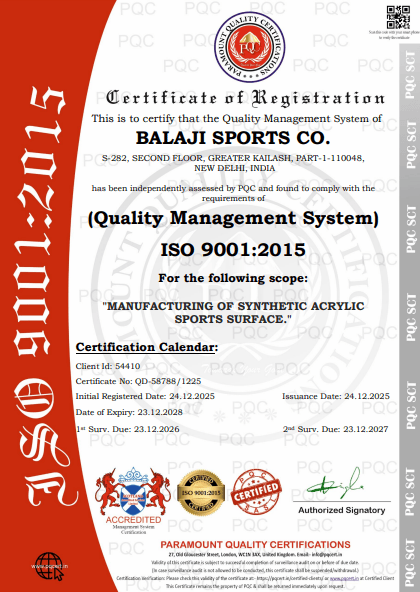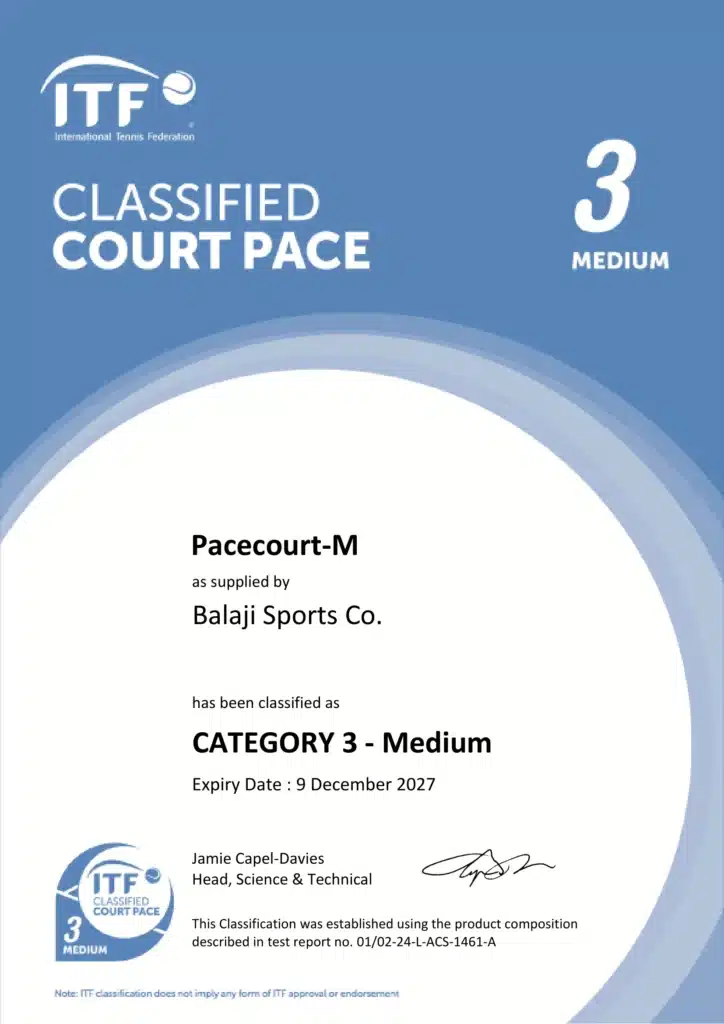Acrylic vs. Laminate Flooring: Which is Better for Sports Courts?
Introduction Sports courts require specific flooring to function well and last a long time. As a leading producer of sports court materials, Pacecourt is well aware of how important it is to consider the demands of athletes and facility managers when choosing sports surfaces. Consequently, this blog will focus on the advantages of acrylic over laminate for outdoor sporting courts. We’ll look at some of the main points that support the idea that acrylic sports surfaces are the best option for long-term performance improvements. Understanding Acrylic Sport Flooring Sport flooring made of acrylic is frequently used for outdoor courts because of its adaptability, toughness, and capacity to improve performance. These surfaces, composed of acrylic resins and additional components, offer a smooth, superior finish suitable for various sports, including Tennis, Basketball, Volleyball, Badminton court flooring, Pickleball, Multi-purpose courts, skating rinks, walking tracks etc. Key Benefits of Acrylic Sport Flooring: Durability: It can withstand harsh weather, heavy foot traffic, and UV exposure without fading or cracking. Performance: It offers a stable, excellent playing surface that boosts players’ performance and lowers their chance of injury. Low Maintenance: It is an excellent long-term investment because it requires less maintenance. Why Laminate Falls Short for Sports Courts Many people believe that laminate flooring is excellent for indoor use but not as ideal for outdoor sporting facilities. Laminate is made up of several layers of artificial composites that are completely unsuited for outdoor use. Exposure to water, sunlight, and temperature fluctuations can cause misshape, cracking, or eventual degradation of the laminate when it is left outside. Key Drawbacks of Laminate Flooring for Outdoor Courts: Exposure to Damage: Water and ultraviolet rays can warp or crack laminated surfaces, which makes the play area unusable. Inconsistent Performance: Due to their synthetic nature, laminated surfaces lack the same predictable bounce and grip found on acrylic surfaces which affects the quality of playing. Higher Maintenance Needs: Laminate flooring can often need repairs or even refurbishment owing to its exposure to environmental aspects. Acrylic vs. laminate Flooring It’s necessary to compare the two materials based on several key factors to understand why acrylic sport flooring is better than laminate: Durability and Longevity Acrylic Flooring: Acrylic surfaces handle outside roughness exceptionally well. As a long-lasting playing surface against the elements and usage-related damages like fading, cracking, or wearing away, they offer durability. Laminate Flooring: Laminated surfaces are not designed to withstand harsh exterior environments. Laminated surfaces will eventually get damaged and need to be replaced due to variations in temperature, moisture levels in the air, and UV exposure. Performance and Safety Acrylic Flooring: An equal playing field with reduced slippage, improved traction, and consistent ball bounces is provided by acrylic surfaces. Both player safety and performance are enhanced by this. Laminate Flooring: It is possible to continue beyond this because players may become hurt. Since there are no equal measures of grip with laminate and they cannot ensure uniformity, sliding off games may seem unpredictable, which increases the risk of accidents and often results in careless bodily injury. Maintenance Requirements Acrylic Flooring: Taking care of acrylic surfaces is very simple, which makes them low-maintenance. To get rid of dirt and debris just wash them from time to time. The surfaces are long-lasting so they do not require frequent repairs or re-surfacing thus making them quite economical options. Laminate Flooring: When properly maintained, laminate flooring has low maintenance requirements. Dirt and dust can be removed from it by frequent washing. Much like acrylic, it rarely needs resurfacing or repairs thus, it is a cost-effective alternative option. Aesthetic and Customization Acrylic Flooring: The acrylic surfaces come in a stunning array of colours and looks that can be customized to match the team’s colours or the facility’s logo, making for an extremely eye-catching scene on the sports court. Laminate Flooring: Because laminate surfaces are less customizable than acrylic, they are less flexible in terms of appearance. The Environmental Impact of Acrylic vs. Laminate Of the diverse sports flooring materials, acrylic is also deemed the most eco-friendly option when examining its environmental effects. Sustainability and Eco-Friendliness Acrylic Flooring: Many acrylic flooring are designed with environmental sustainability in mind; water paint coats keep their materials low. Additionally, because acrylic surfaces last a long time, there is less waste because they don’t need to be replaced as often. Laminate Flooring: The laminate surfaces are typically made of synthetic materials and less environmentally friendly glues. Their shorter lifespan and frequent replacement necessitate increased waste production and a larger carbon footprint. Cost Analysis One of the most important considerations when building a sports court is cost. Different costs may apply for the initial outlay, however, it’s important to remember that acrylic flooring is typically thought to be less expensive over time: Initial and Long-Term Costs Acrylic Flooring: Although the initial installation cost of acrylic flooring may be slightly more than that of laminate flooring, over time, acrylic flooring is more cost-effective due to its durability and low maintenance requirements. This saves facilities money on replacements, resurfacing, and repairs. Laminate Flooring: Even though laminate may seem less expensive at first, over time, costs rise due to the frequent maintenance, repairs, and inevitable need to replace it. Future Trends in Sports Court Flooring As technology advances, the sports flooring industry is seeing exciting new trends that favour materials like acrylic: Emerging Trends Smart Court Technology: Presence of a sensory network on the surface of acrylic – for wear and usage monitoring in real-time as well as performance aspects of it. Eco-Friendly Materials: developing acrylic compositions that work as well yet are more environmentally friendly and sustainable. Customization and Design: Custom courts with specific brands and colours are becoming more and more in demand, and acrylic materials can easily accommodate this need. Conclusion For player safety, performance, and overall pleasure, choosing the right kind of surface for your sports court is essential. When it comes to environmental effects, durability, performance, maintenance, and aesthetics, acrylic sports flooring outperforms laminate. When facility managers, athletic




